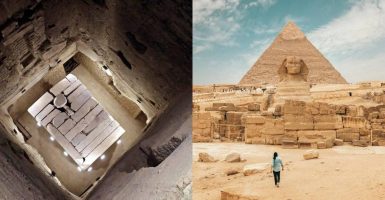Fascinating Lesser-Known Facts About The Pyramids
Not only are the pyramids still one of the seven wonders of the world, but they are also full of secrets. The pyramids might hold proof of advanced technology and symbols that are hard to believe or understand.
Want to find out more about these incredible feats of humanity? Keep reading through!
There Are More Than Just Three Pyramids
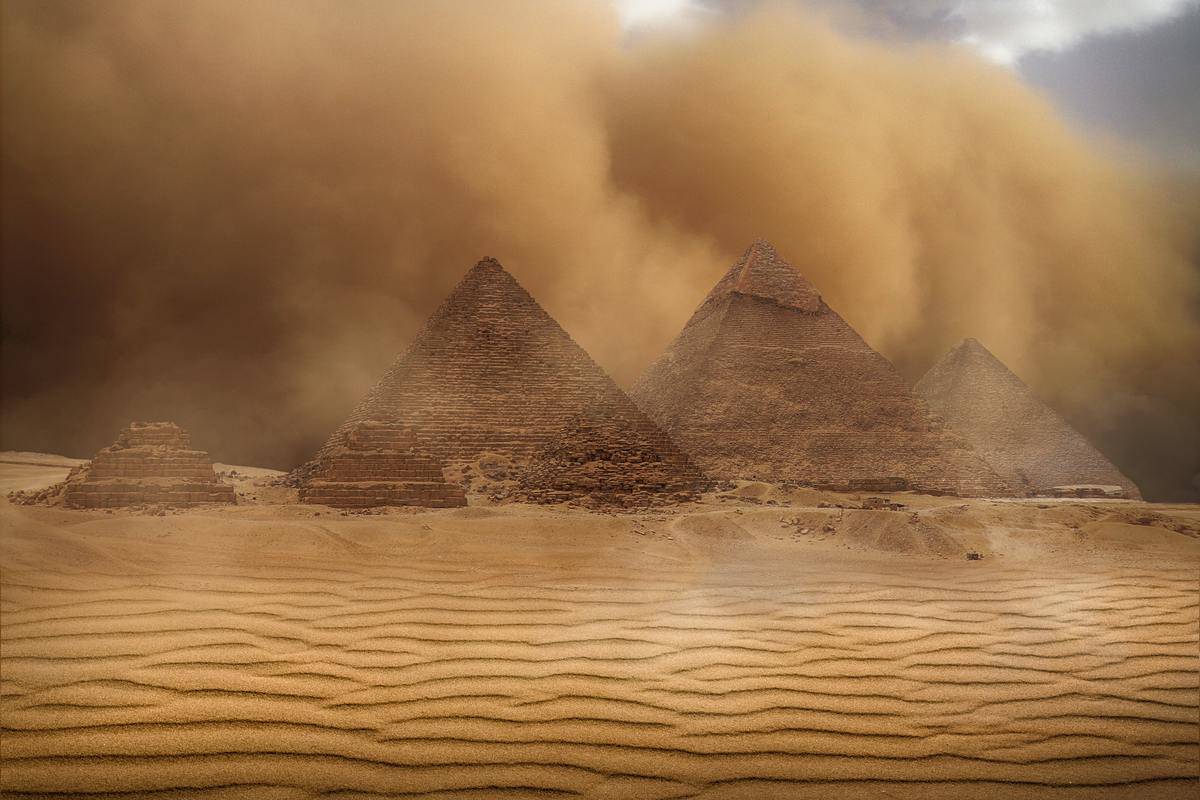
The three famous pyramids in Giza the Pyramid of Menkaure, the Pyramid of Khafre, and the Great Pyramid of Khufu. But these are just the largest. In fact, as many as 140 pyramids in total have been discovered in the area of Ancient Egypt.
The Giza Pyramid Is The Last Of The World’s Wonders
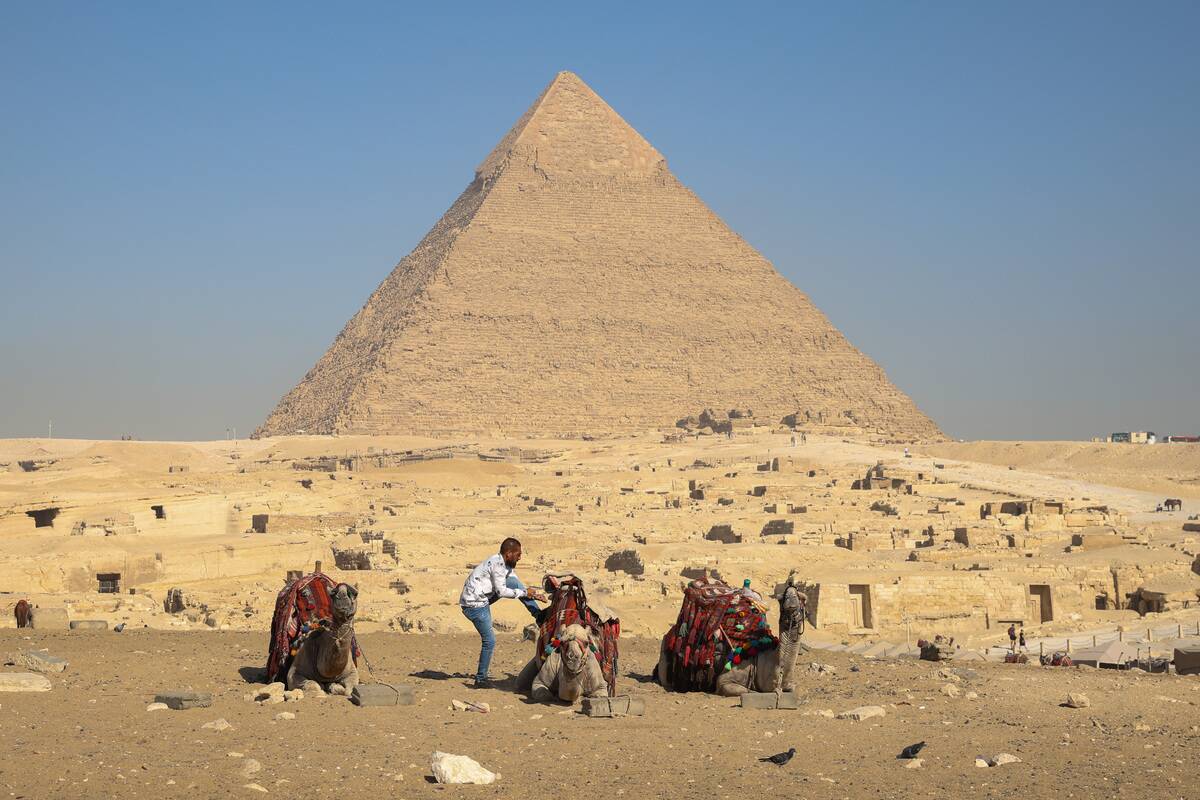
Although there is a list of the seven “new” wonders of the world, the classic seven wonders of the ancient world consisted of the Colossus of Rhodes, the Hanging Gardens of Babylon, the Temple of Artemis, the Mausoleum at Halicarnassus, the Lighthouse of Alexandria, the Statue of Zeus at Olympia, and the Great Pyramid of Giza.
For those wondering why they’ve only seen photos of the pyramid, that’s because it’s the only structure on that list that still exists. While it’s a matter of debate as to whether some of the other wonders ever existed in the first place, it’s undeniable that the Great Pyramid of Giza is the only wonder of the ancient world that remains standing.
The Great Pyramid Of Giza Is Not The Oldest Pyramid
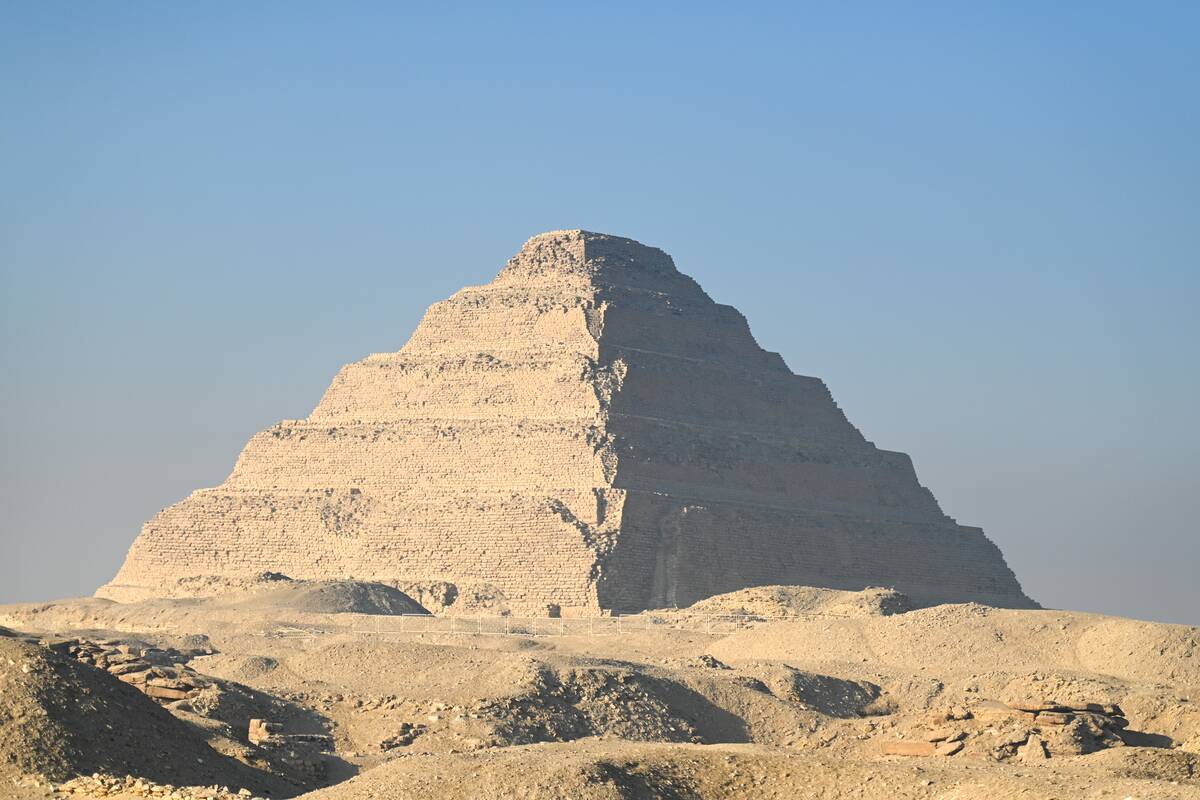
Although the Great Pyramid of Giza has the impressive distinction of being the oldest surviving wonder of the world, that does not mean it was the oldest Egyptian pyramid. Indeed, this stands to reason, as its grand size could understandably be considered an escalation of previous pyramid projects.
Instead, the oldest known pyramid in Egypt is the Step Pyramid of Djoser, pictured here. According to Live Science, it’s about 4,700 years old. For comparison’s sake, National Geographic described the Great Pyramid of Giza as being about 4,500 years old.
The Great Pyramid Was The Tallest Building For 3,800 Years
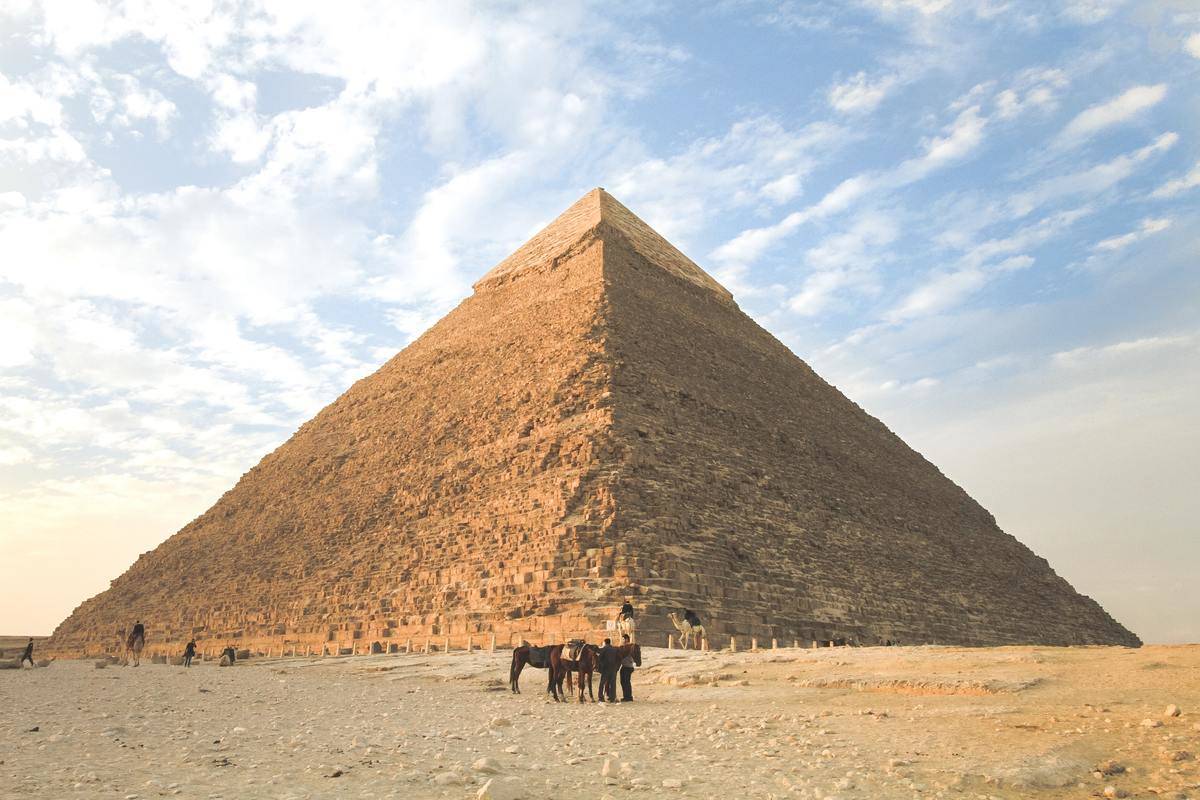
Move over, Burj Al Arab! Until the 19th century, the Great Pyramid of Giza was the tallest man-made building. It was made about 4,500 years ago, making it even more impressive that they were able to build something so giant using ancient technology.
Egyptians Used Astronomy To Guide Their Construction
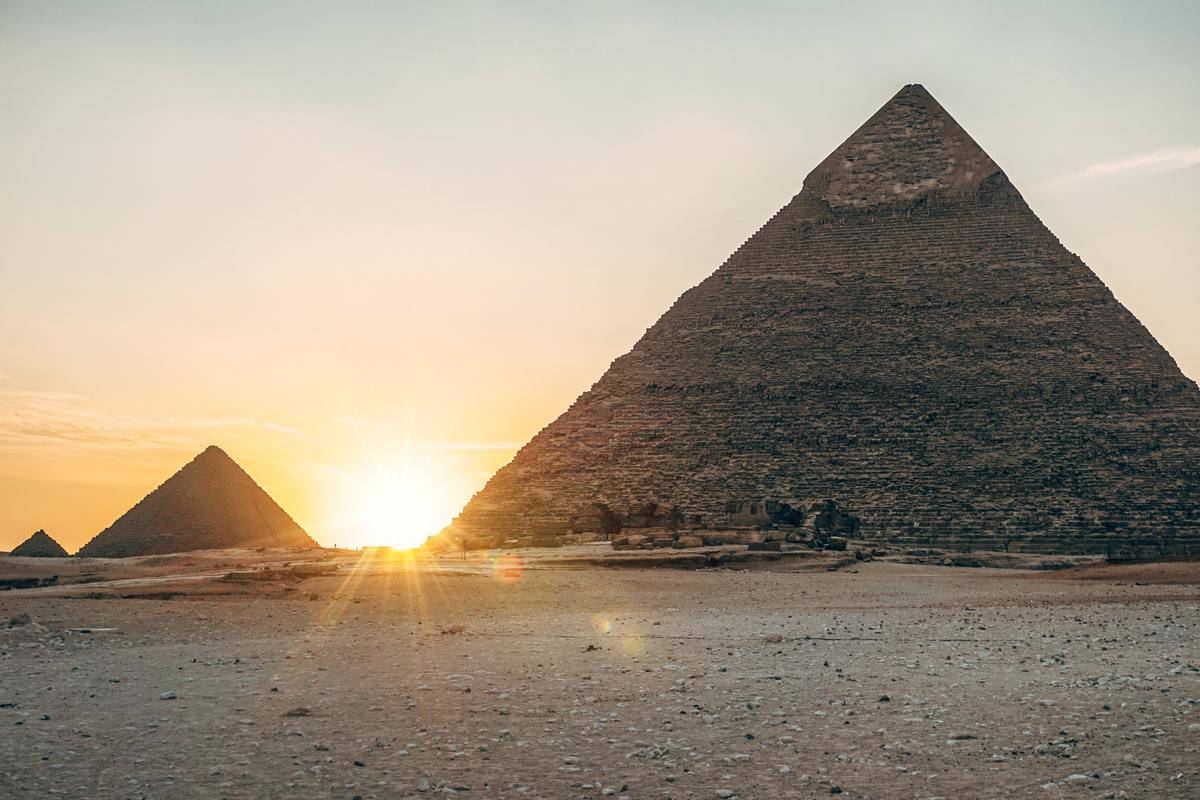
According to a British Egyptologist, the stars were a guiding force in how the pyramids were aligned. Research shows that the Big Dipper and Little Dipper were used to align the pyramids in a north-south direction so accurately that it only had a margin of error of up to 0.05 degrees.
The Red Pyramid Of Sneferu Had An Influential Design
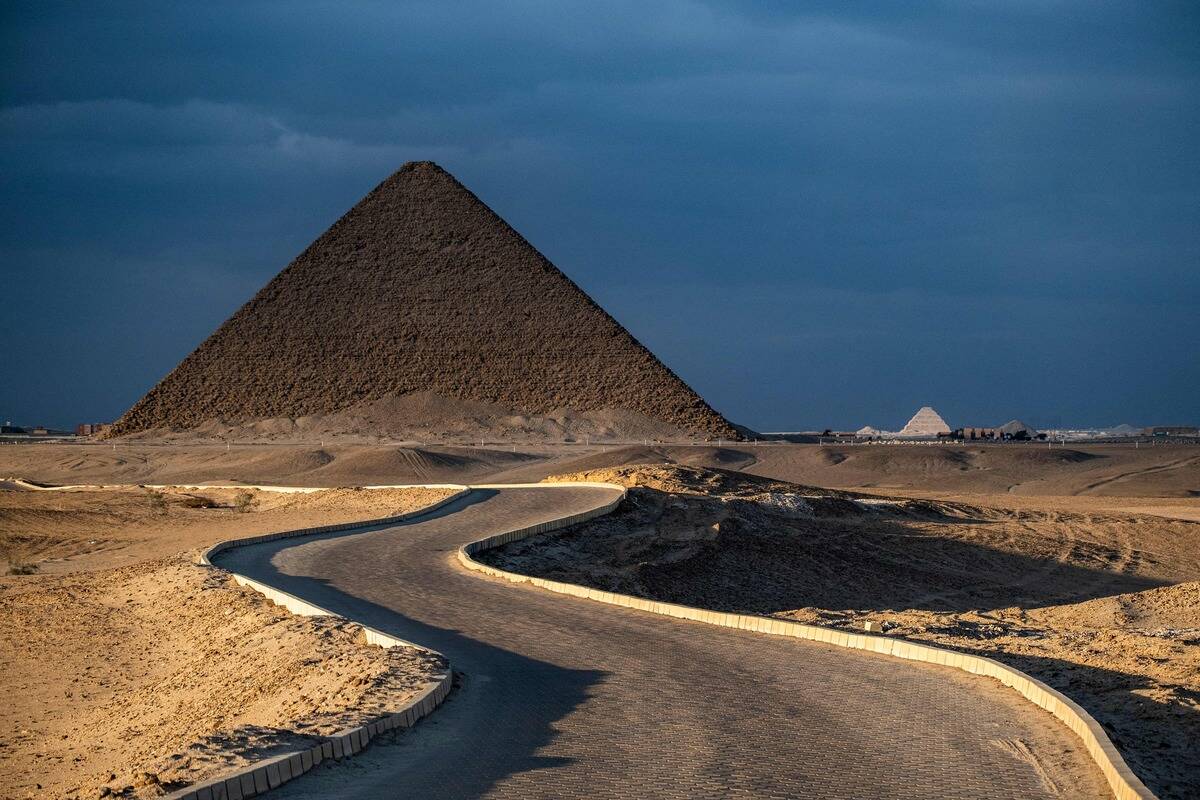
In the book The Treasures Of The Pyramid, edited by archaeologist and Egypt’s former Minister of Tourism and Antiquities Zahi Hawass, the Red Pyramid of Sneferu is described as the first true pyramid.
Although the step pyramids like Djoser are older, the Red Pyramid stands out for being the first pyramid to feature smooth faces rather than step formations. Since this modernization near the end of Sneferu’s reign would influence the design of all future pyramids in Egypt, the idea of the Red Pyramid as the first “true” pyramid was born.
The Pyramids Are Slowly Shrinking
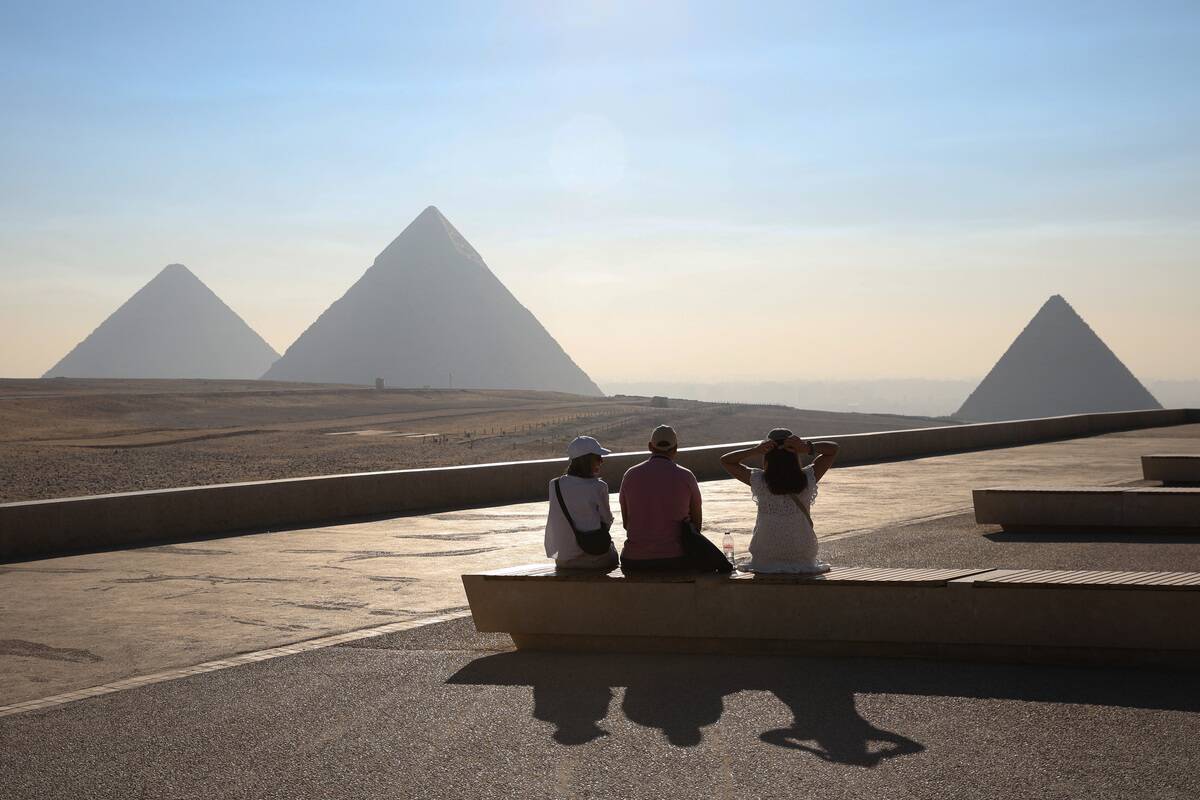
Although it’s happening gradually enough that it wouldn’t be noticeable to the naked eye, it is nonetheless true that each of Egypt’s pyramids are getting shorter each year. Even though it’s still unclear what kind of stone mixture was made to create them, there isn’t a rock in the world that isn’t affected by erosion.
Considering how harsh the weather in desert environments can be, it’s not a surprise that harsh winds and other processes would gradually wear even the grandest pyramids away. According to New Scientist, this erosion is making the pyramids shrink by about 0.04 inches per decade.
Unlike What Everyone Thinks, The Pyramids Weren’t Built By Slaves
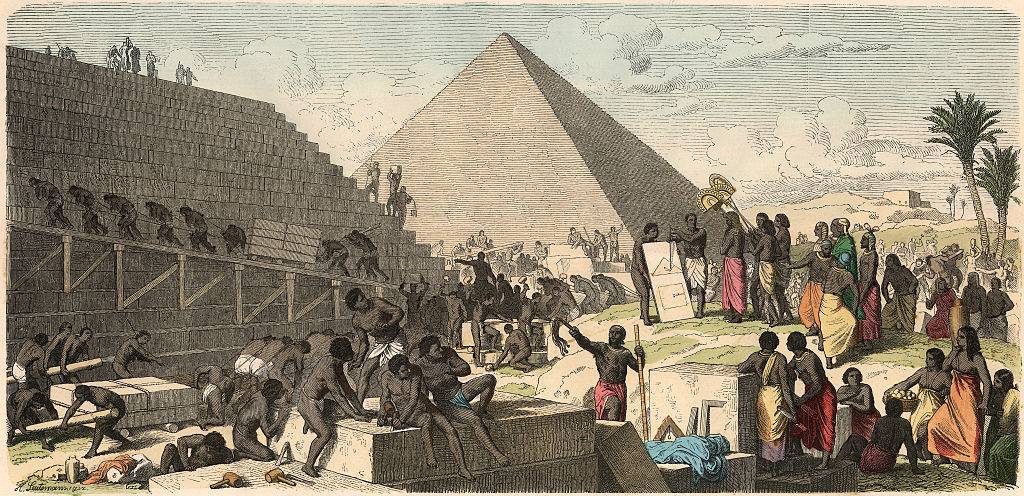
The pyramids were actually built by paid workers. So many skilled artisans wanted to be involved in the construction of something they knew would be great. Research shows that the builders were treated very well and even honored, to the point that many of them who died during the construction were buried next to the final resting place of the Pharaoh.
The Bricks Weigh More Than An Elephant
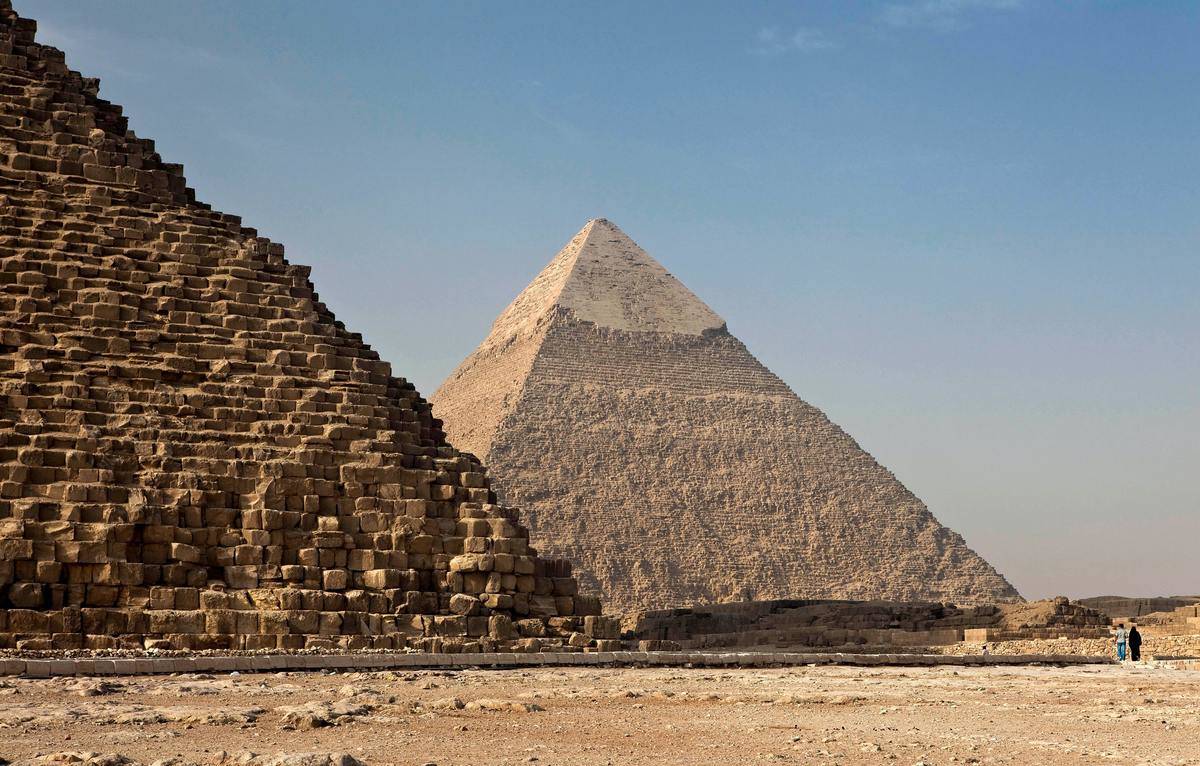
The pyramids were built with 50-ton stone blocks. In fact, they were constructed with 2 million bricks, so how they transported and lifted such heavy weights without technology or industrial machinery is still a huge mystery.
Pyramid Design Tended To Vary By Region
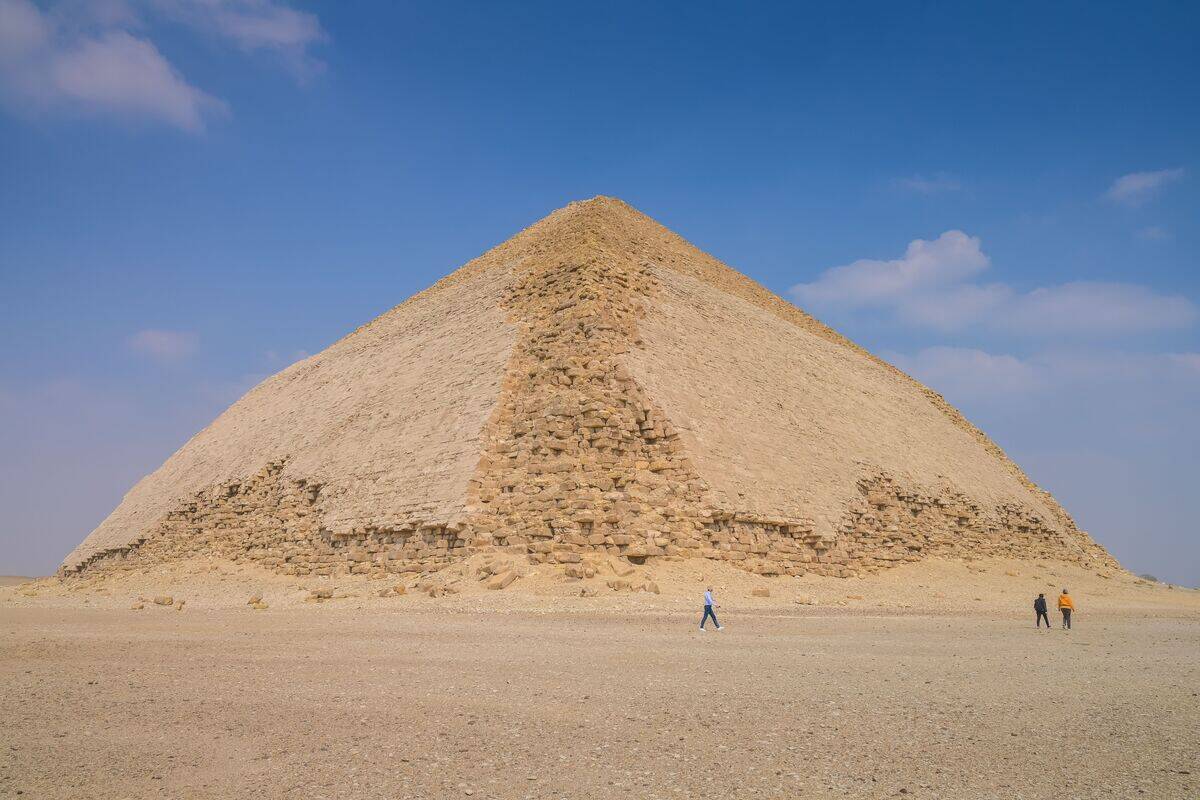
Although the popular image of Egypt’s pyramids (even if this consideration is limited to “true” pyramids) depicts them as smooth-faced structures sharply coming to one pointed tip, the truth is that this is due to the Giza Pyramid Complex’s de facto status as the face of Egyptian pyramids.
Were someone to travel to Dahshur, the pyramids they would find there would be more likely to look like the one pictured. Although its angle near the base is similar to the Giza pyramids at 54 degrees, there’s a dramatic change to a 43 degree angle further up the pyramid, which is why it and other Dahshur pyramids like it have this bent appearance.
The Giza Pyramids Are Closer To Urban Life Than It Seems
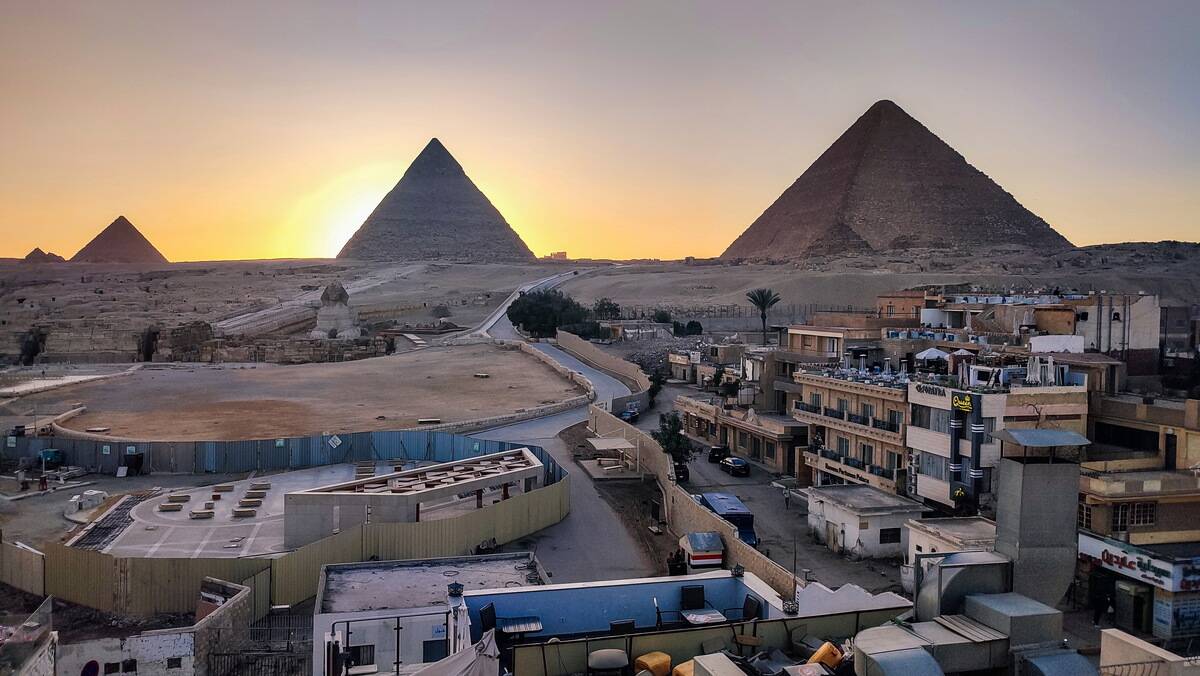
Perhaps as a way of conveying their majesty, the pyramids of Giza tend to be shot in what looks like an isolated desert far from any major cities. However, it turns out that’s a clever illusion that so many photographers have kept up over the decades.
As shown here, the pyramids are actually relatively close to Giza proper. Since Giza is one of the largest cities in Africa with a population of about 5.9 million (or 9.5 million if you count the surrounding rural areas), the nearby pyramids ar as far from isolated as it gets.
The Inside Tunnels Of The Pyramids Are Like A Big Labyrinth
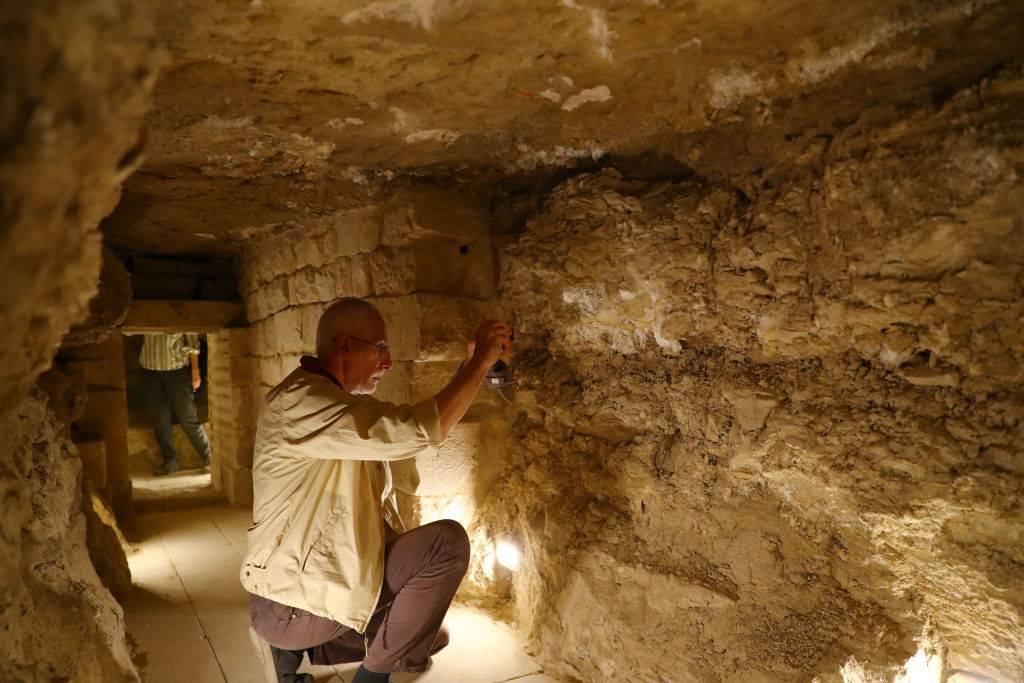
Another sign of how advanced their civilization was are the tunnel systems that go deep beneath the desert. They were carved from limestone and not all of them have been discovered. Every time that a new tunnel system is discovered, they reveal new passageways, hidden chambers, and treasures.
It Took A Whole 200 Years To Build The Pyramids
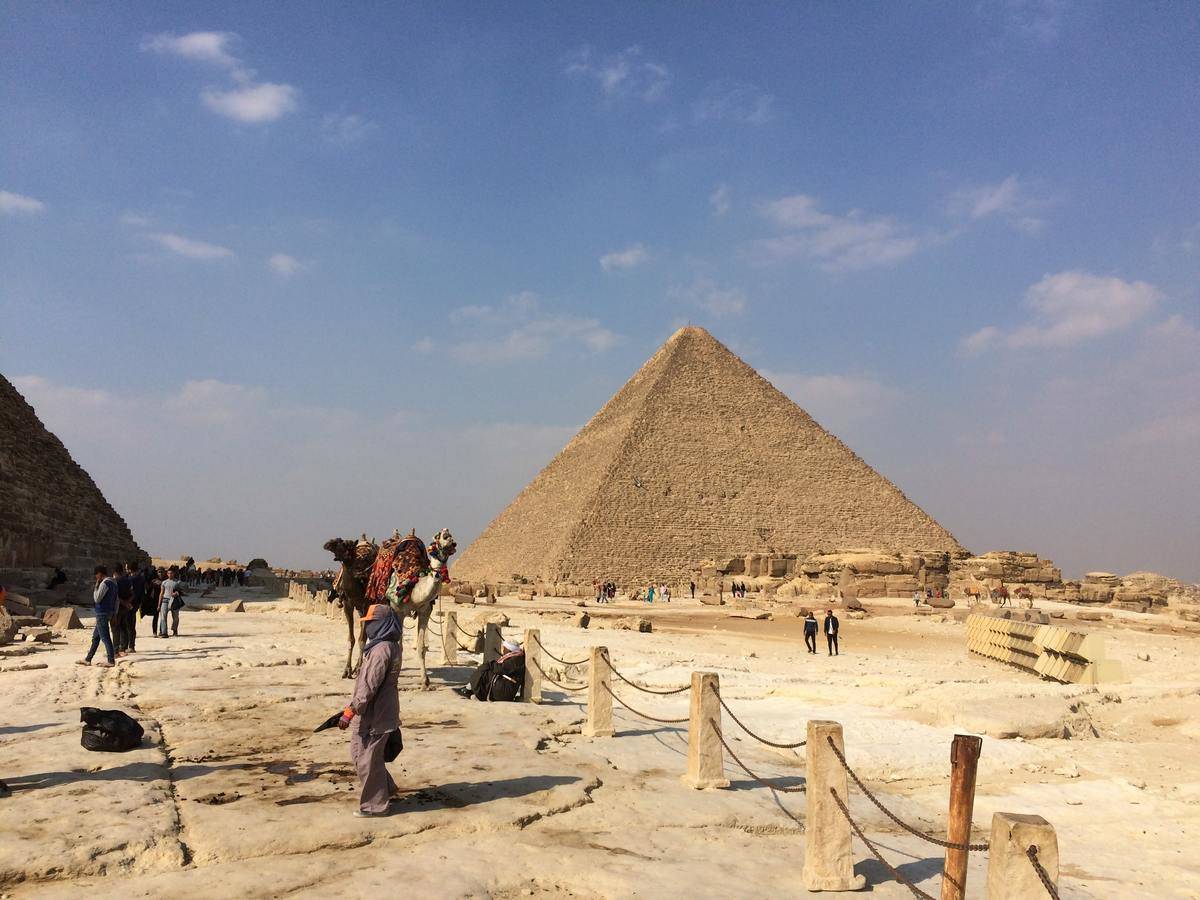
Imagine the number of people that contributed to this project over two centuries. This includes the time effort required to build all 138 pyramids. This is because they weren’t just building at random, but positioning them in such a specific relation to the stars.
A Pyramid Architect Was Once Worshipped As A God
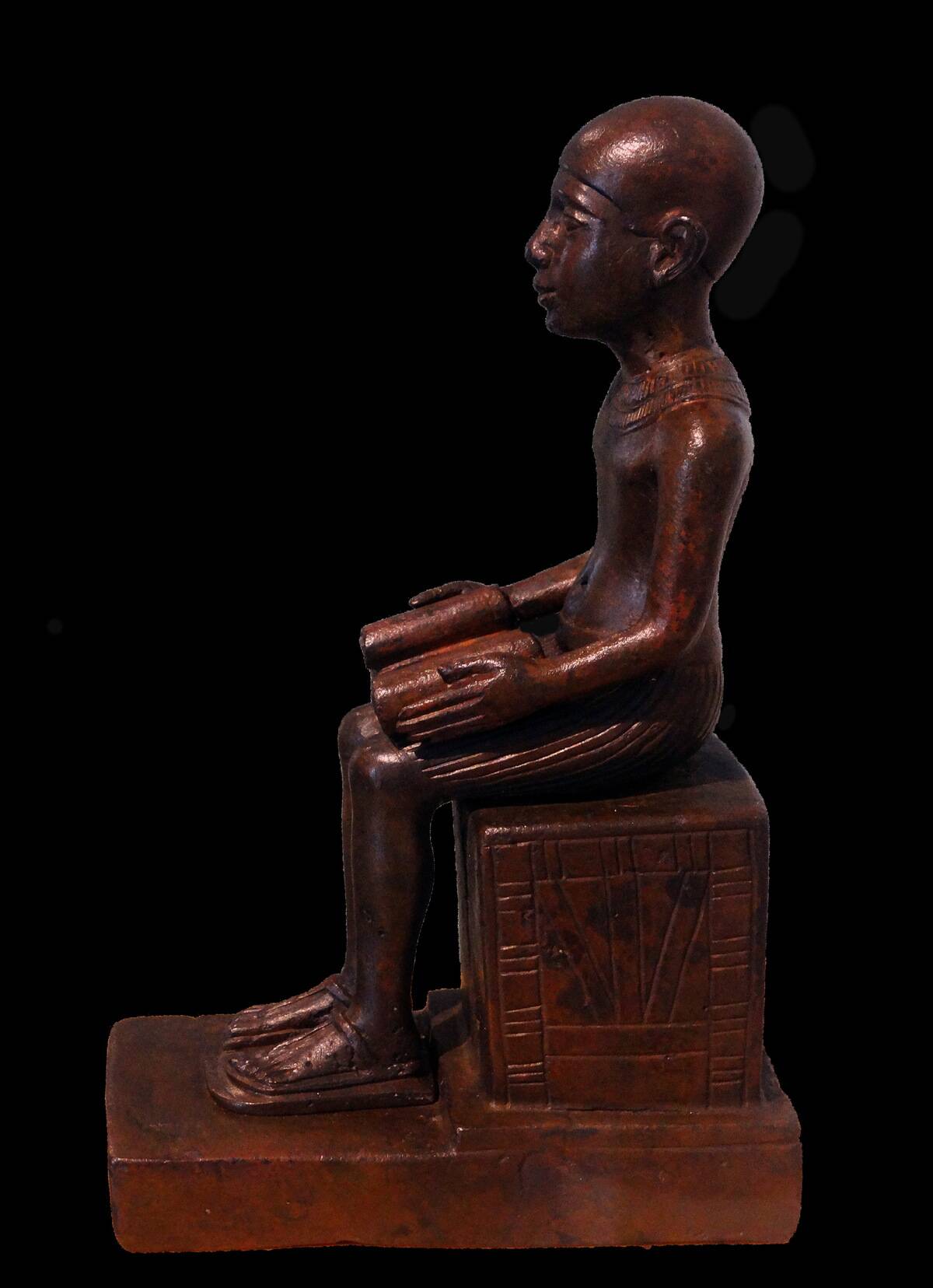
As sometimes happened in other ancient civilizations, it wasn’t unusual for Egyptian Pharaohs to be deified after their deaths. However, one incredibly accomplished man was able to improbably gain the same status despite not being a ruler. This was Imhotep, the vizier of the Pharaoh Djoser, who was also Egypt’s chief physician at times and the architect of the step pyramid named after his king.
As impressive as his architectural mind was, however, it was his status as the father Egyptian medicine that made him achieve demigod status after his passing. According to a 2008 article in the Serbian journal Medicinski Pregled, he was further elevated to the god of medicine after another 2,000 years.
The King’s Chamber At Giza Seems Impossible
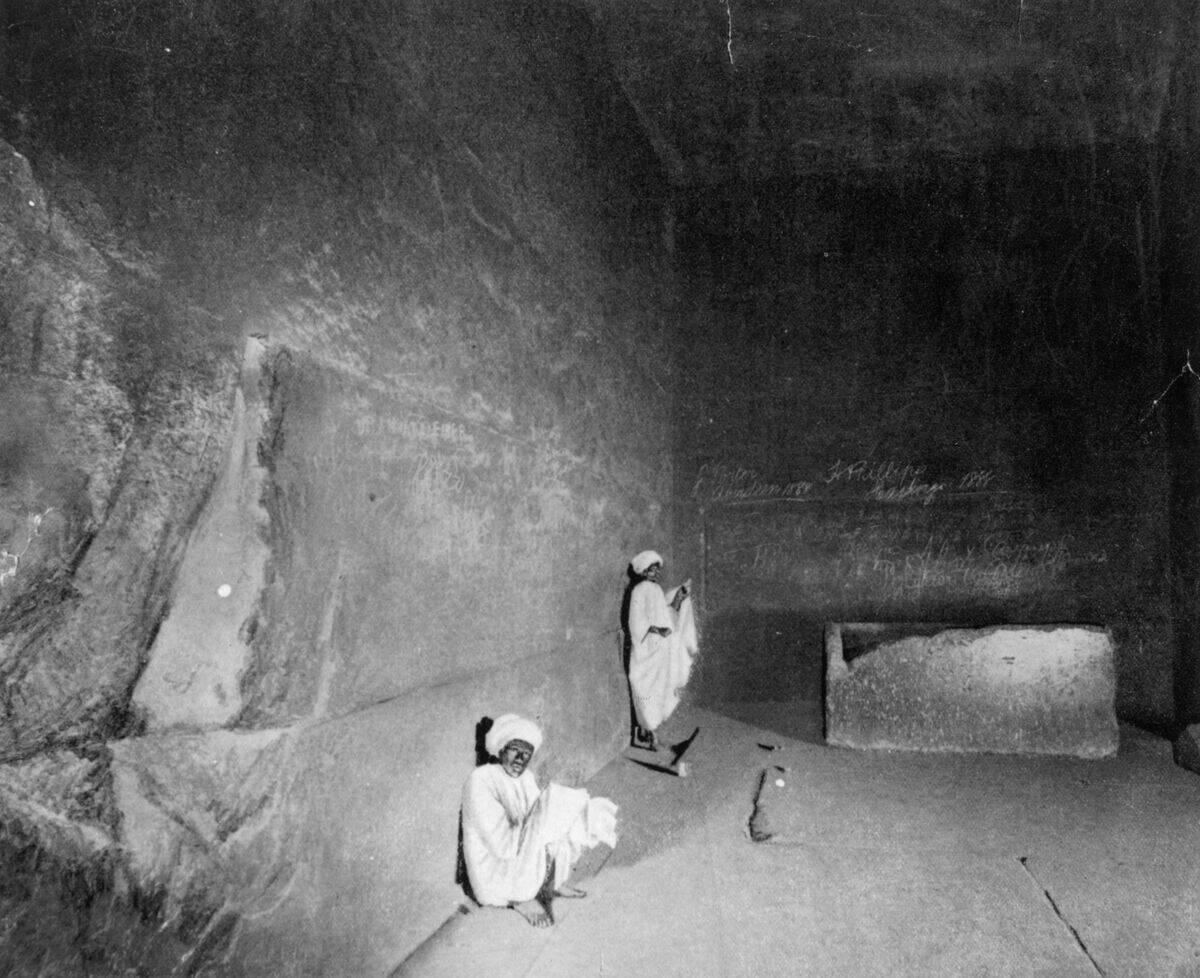
Even putting aside the marvels that went into the construction of the pyramids themselves, archaeologists are still puzzled by the fact that the King’s Chamber in the Great Pyramid of Giza has the grand stone features it does. That’s because the granite blocks shown here weigh about 80 tons each and number in the hundreds.
However, that’s not the extent of why their presence is so staggering. In addition to their incredible weight and number, these granite blocks also had to be moved about 328 feet upward to reach the right spot in the King’s Chamber. Even with pulley systems, hundreds of people would have needed to be involved.
The Pyramids Are Built Where The Sun Sets
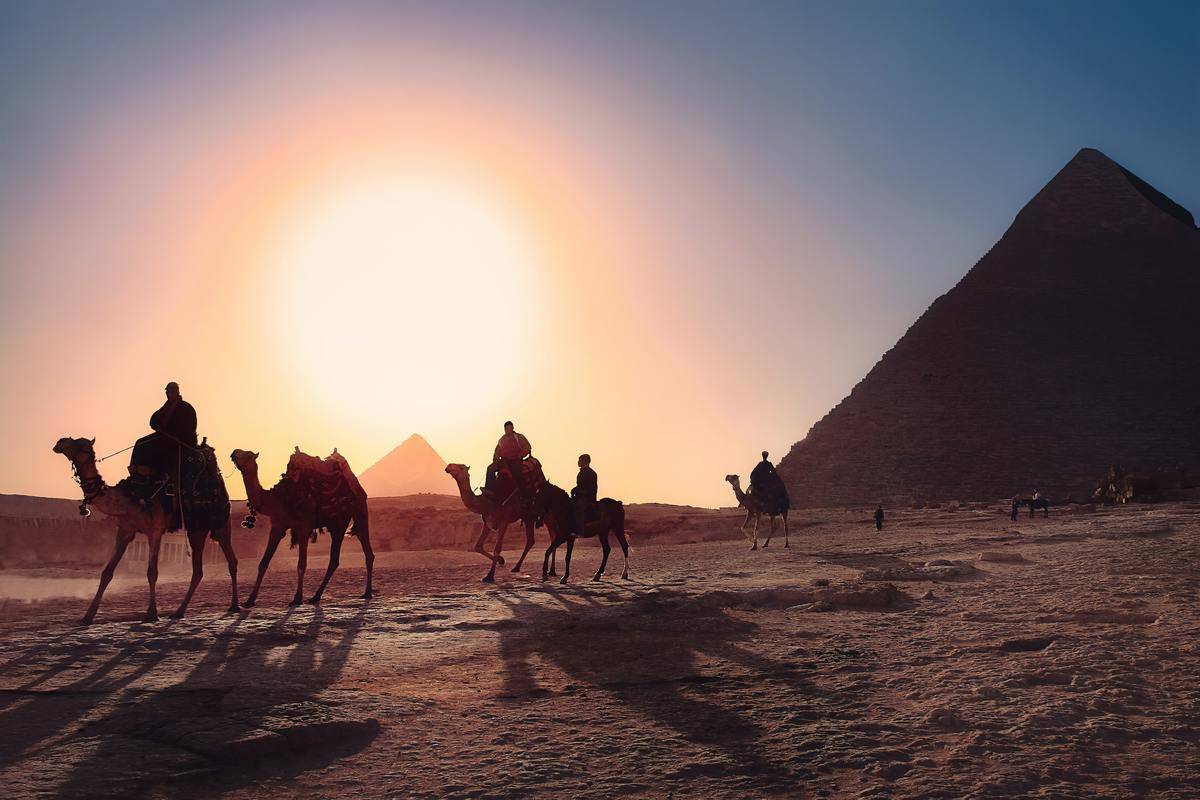
All of the pyramids in Egypt, even those built on the Giza plateau, were placed on the west bank of the Nile. This was to coincide with the location of where the sun sets, a symbol that ancient Egyptians associated with the realm of the dead.
The Pyramids Could Have Required About 100,000 Workers
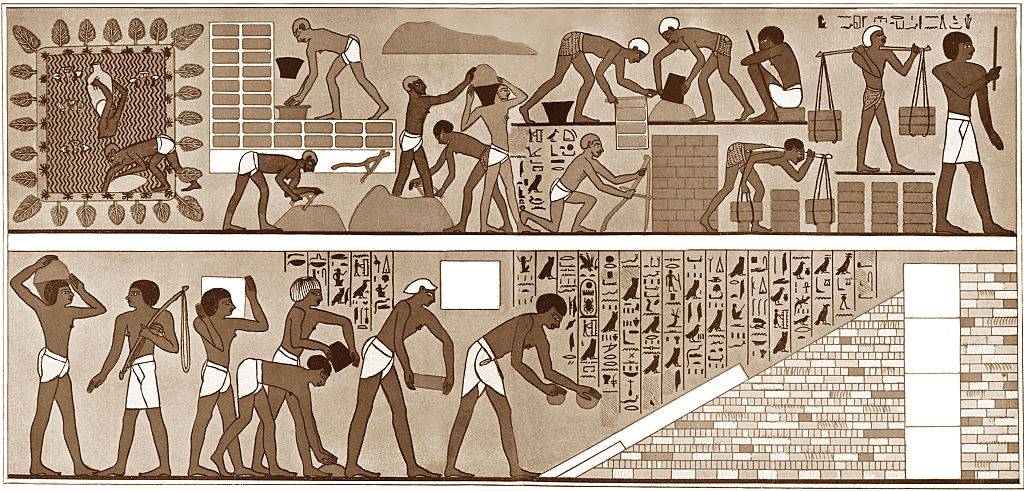
The number of workers hasn’t been confirmed, but the estimates for how many would have been required to build something so giant and intricate could have been as high as 100,000 people.
They Used To Shine And Shimmer Like Gold
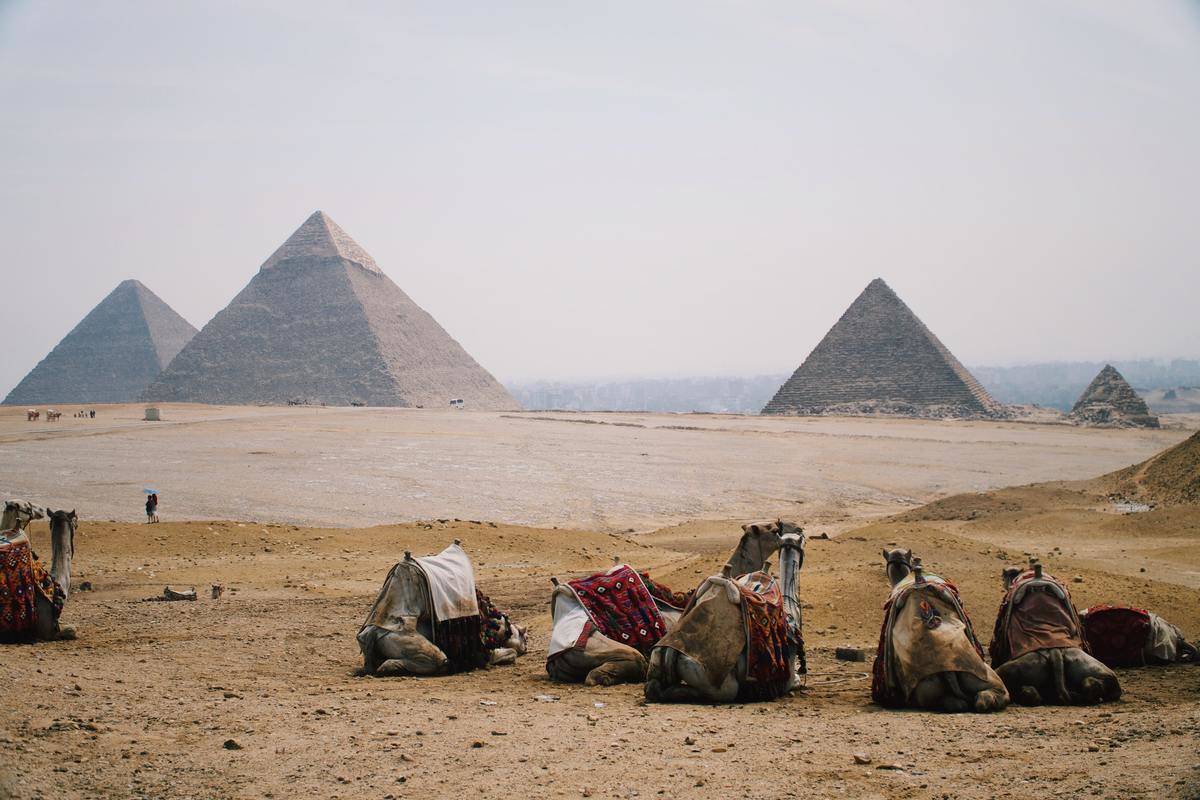
When they were first built, ancient Egyptian pyramids were covered in a layer of well-polished limestone. This covering gave them such a shimmer that they sparkled like diamonds from miles away when the sun reflected on them. Unfortunately, the limestone has broken off over the years.
Pyramids Have 20-Ton Doors That You Can Still Move With A Single Push
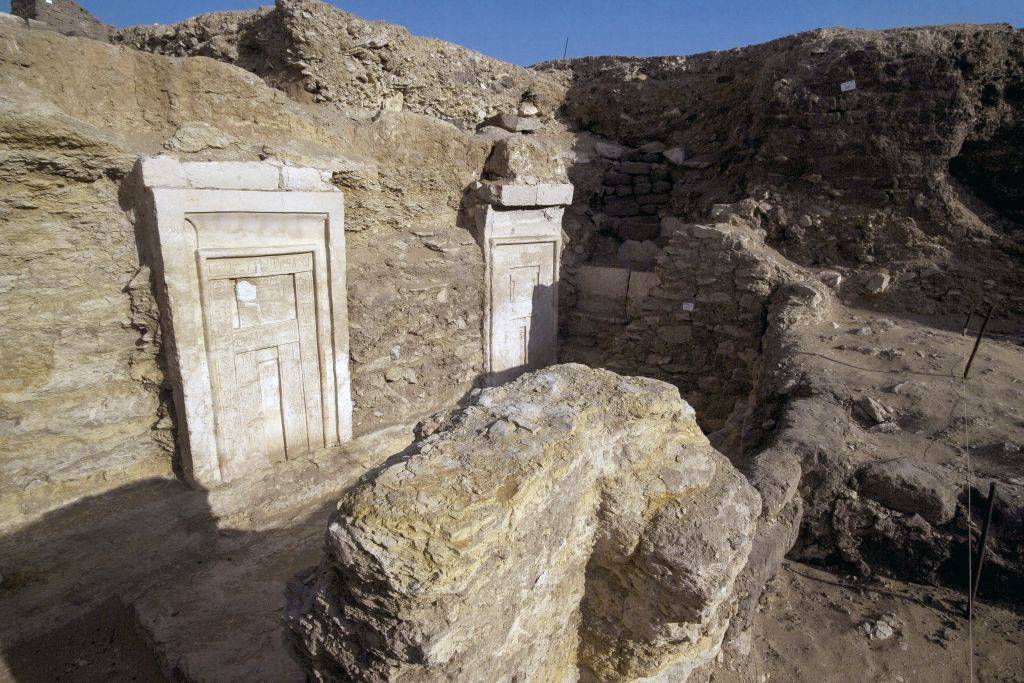
Can you imagine pushing open a 20-ton door? You’d be surprised at how easy it is to push this one, as it is so perfectly balanced from the inside. The doors are hidden from the outside. We still don’t know how they could have cut, placed, and balanced them so accurately.
Pyramids Had Secret Chambers For Specific Statues
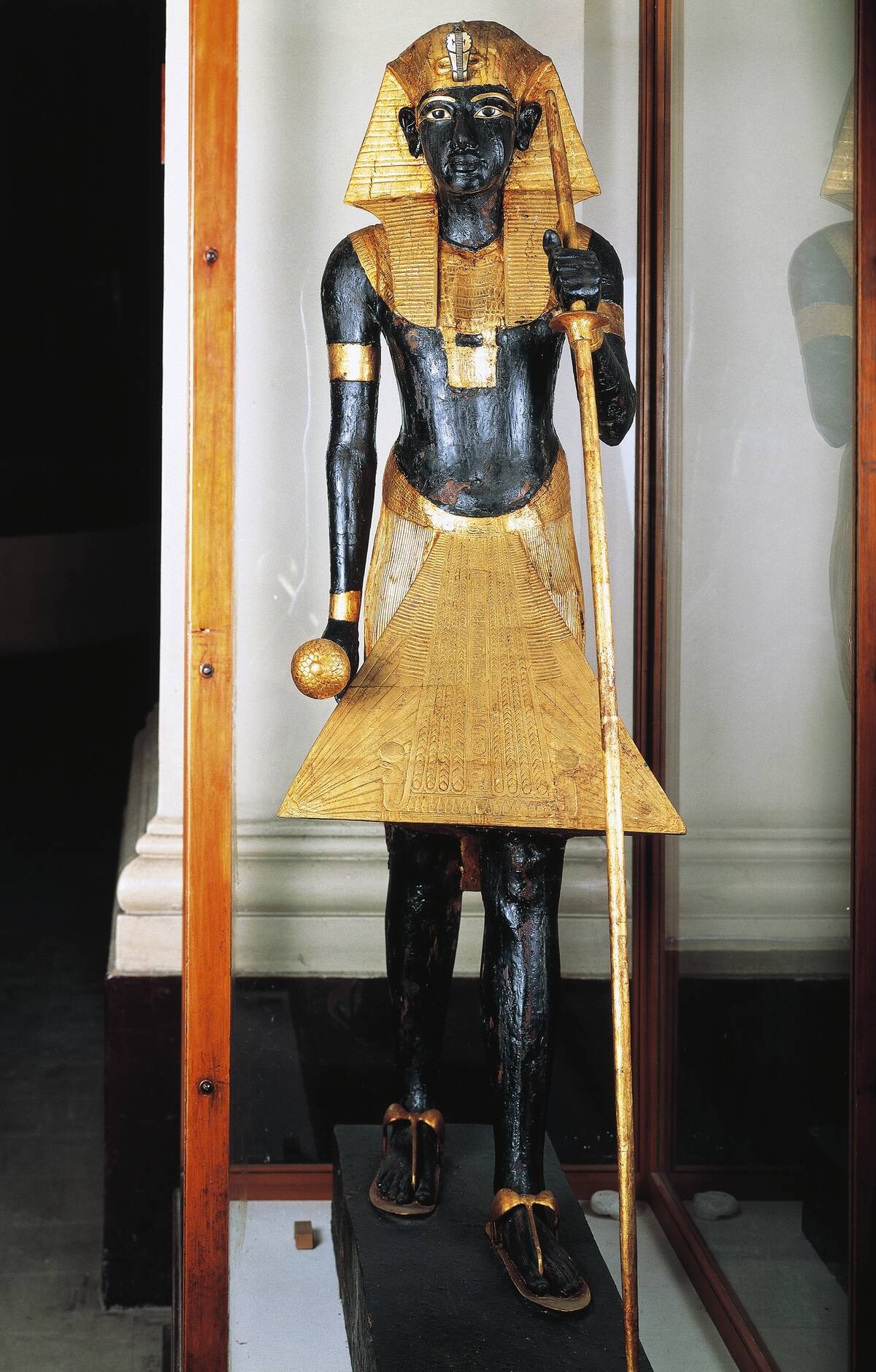
Although the burial chamber of a pharaoh didn’t tend to particularly secret in ancient Egyptian pyramid design, the same could not be said for a chamber called a serdab. These had the specific purpose of housing the pharaoh’s “ka” statue.
According to New Scientist, ka statues like the one depicted here for Tutankhamun were supposed to contain the essence of the pharaoh that persisted in the afterlife. Pyramid grave robbing was as pernicious a problem in ancient Egypt as it would become in the following centuries, so serdabs were meant to protect the pharaoh’s ability to cross over into the afterlife.
Pharaohs Believed The Pyramids Would Let Kings Ascend To Godhood
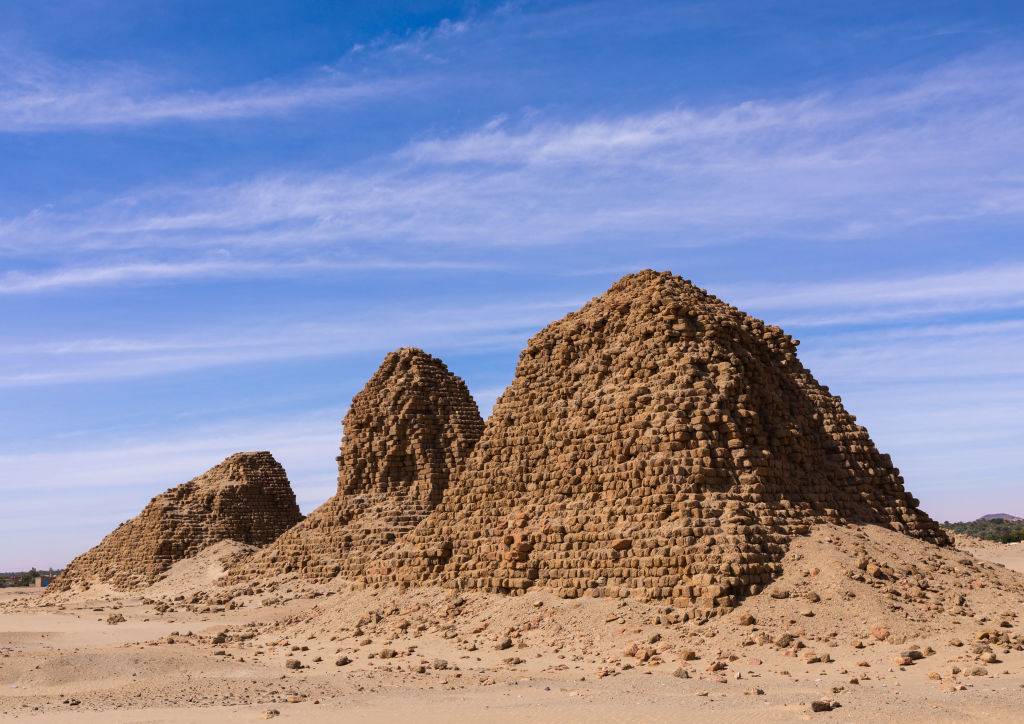
The pyramids’ intention was to help kings ascend to Sun Ra, the god of the sun. That’s because, at the time, kings were thought to be deities living on Earth who needed to be returned home when they died. For that reason, they also buried them with everything that they could need in the afterlife including animals, servants, and gold.
The Pyramids Still Have Their Guard, The Sphinx
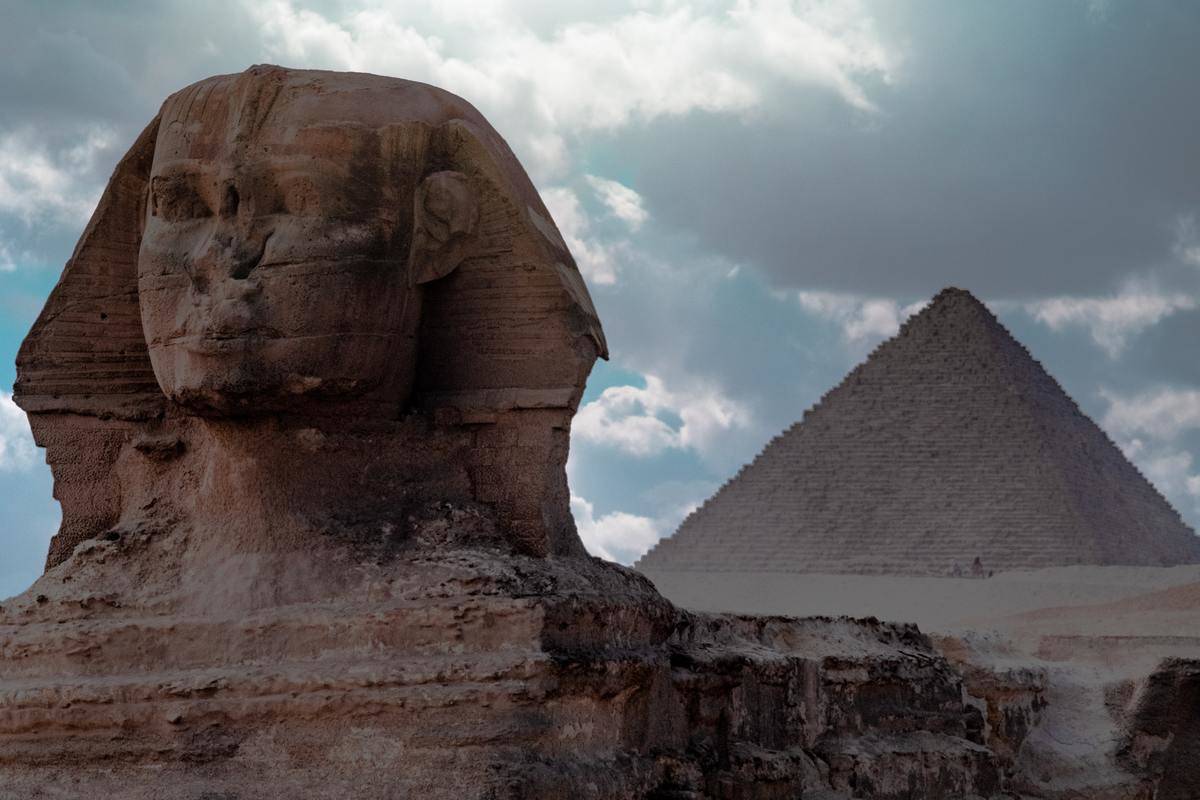
The face of the Sphinx is generally believed to represent the face of the Pharaoh Khafra. It has the body structure of a lion and the head of a pharaoh. The sculpture is said to be guarding the pyramids. It is also the largest monolith statue in the world.
One Theory Says The Pyramids Are At The Exact Center Of All Landmass On Earth
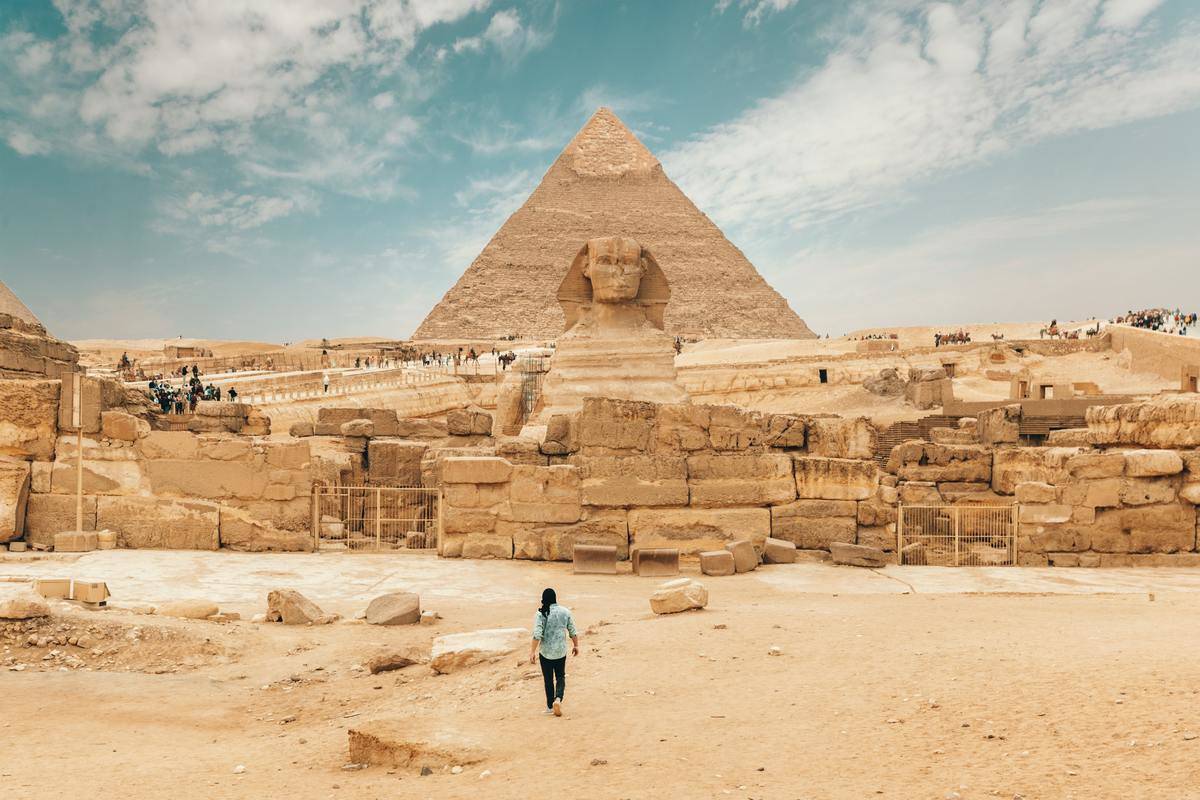
Here is a crazy theory that was discovered In 1877 by Dr. Joseph Seiss. His research showed that the pyramid of Giza is located exactly at the intersection of the longest line of longitude and the longest line of latitude. This puts it exactly at the center of all the landmass of our planet!
The Temperature Inside Is Somehow Always Kept at A Cool 20°C
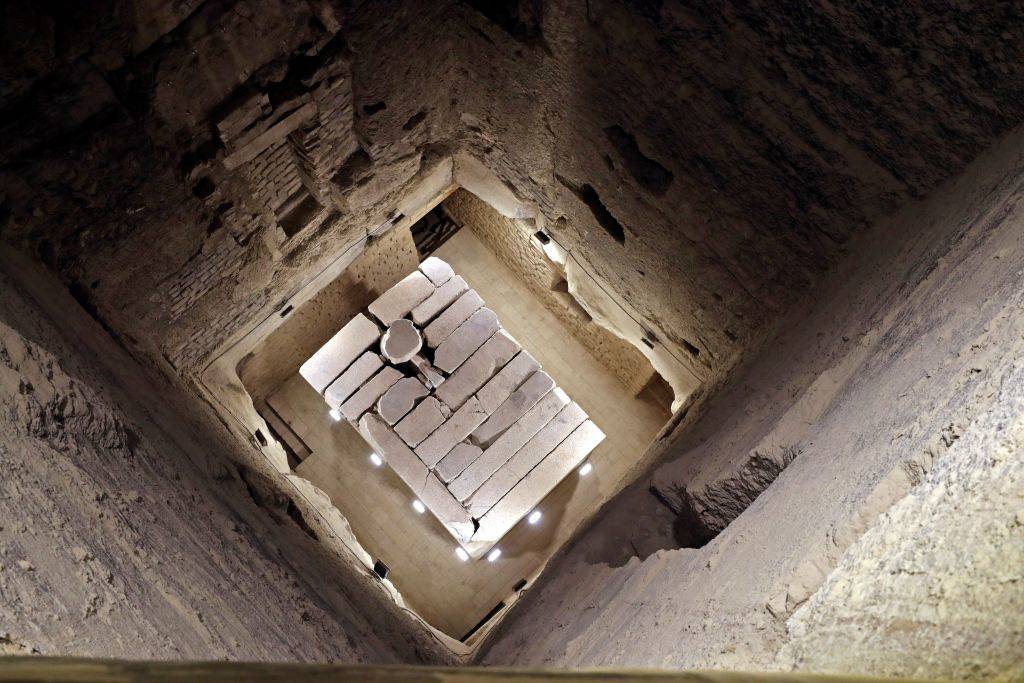
This might be the mother of all air conditioners. Even though Egypt was and is very hot, and its temperature varied, inside the pyramids, it has never dropped from 20 degrees Celsius. We have no idea how they managed to ventilate it and design it that way!
We Still Can’t Recreate The Mortar They Used
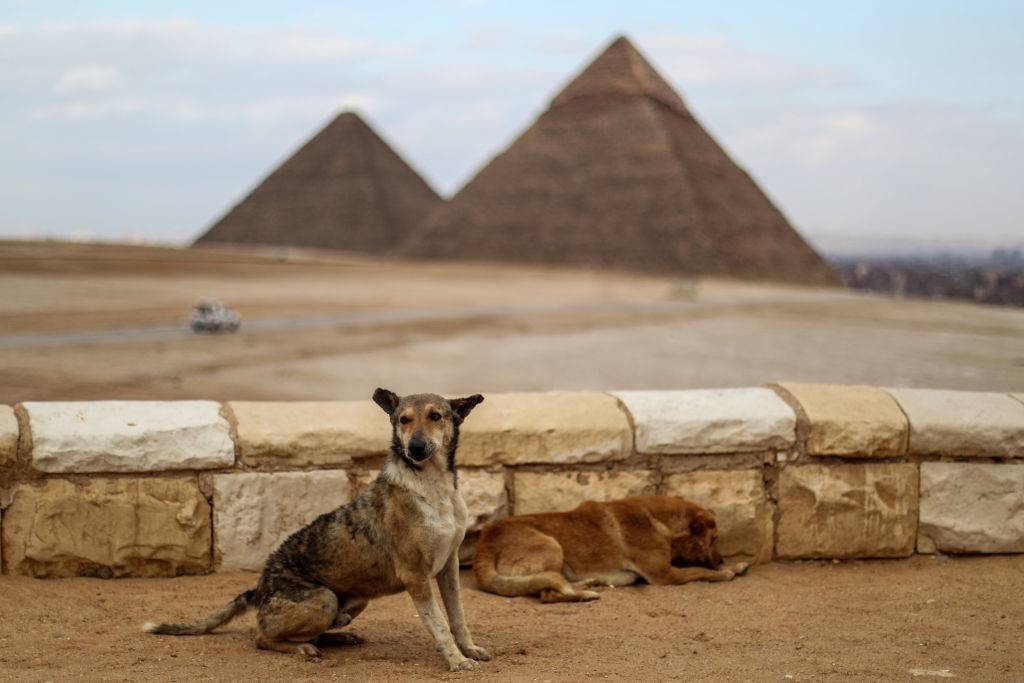
Although scientists have analyzed the mortar used for the construction many times, they still can’t determine its composition or use our advanced technology to recreate it. All we know is that it is made from processed gypsum, and it’s very different from the cement we use. Mortar is what supports the joints of the stones as they were placed, all 500,000 tons of them.
The Pyramids Have Eight Very Precise Sides, Not Four
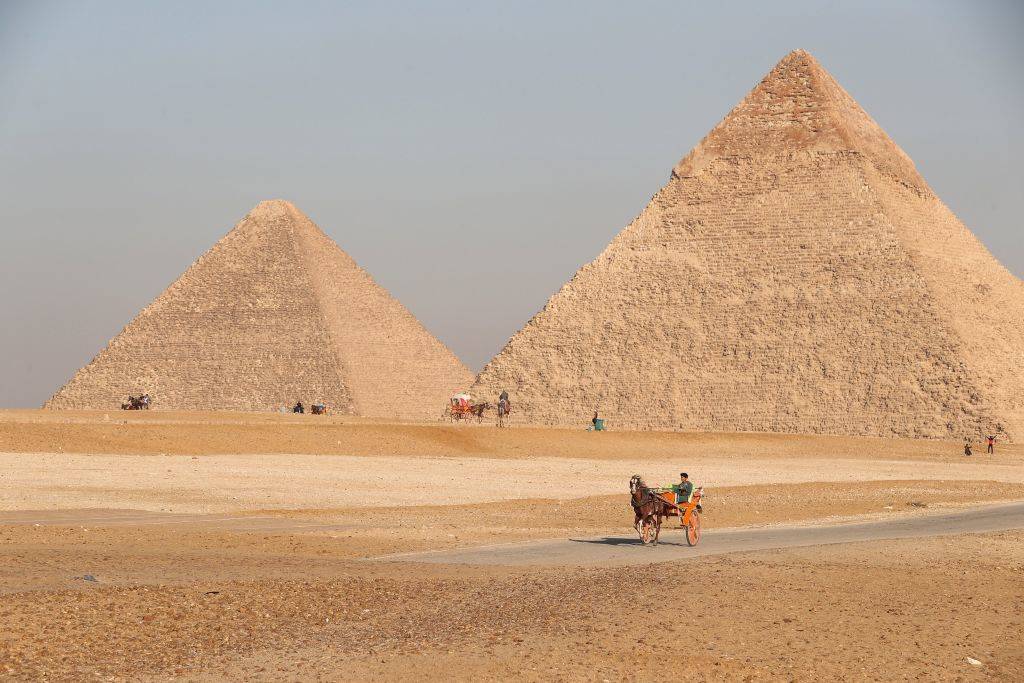
You might think the pyramids only have four sides at first glance, but it is an eight-sided structure. Research suggests it’s to keep the casing stones in place. What’s interesting is that sides indent by precisely one degree of a half-degree. That would be so hard to do even today.
There Is Actually No Sign Of Hieroglyphs
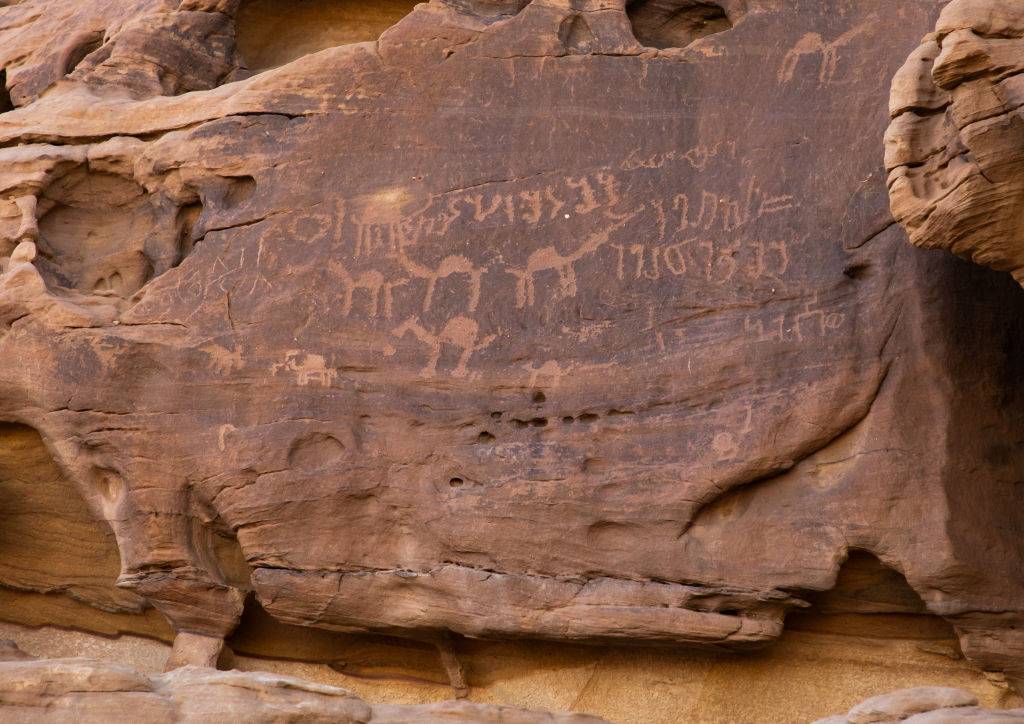
You might think Egypt and the pyramids are synonymous with hieroglyphics, but there is no sign of writing or hieroglyphics within the Great Pyramids. Perhaps they were trying not to spill their secrets?
Mathematical Constants Show Knowledge of Pi Before Pi Was Even Recognized
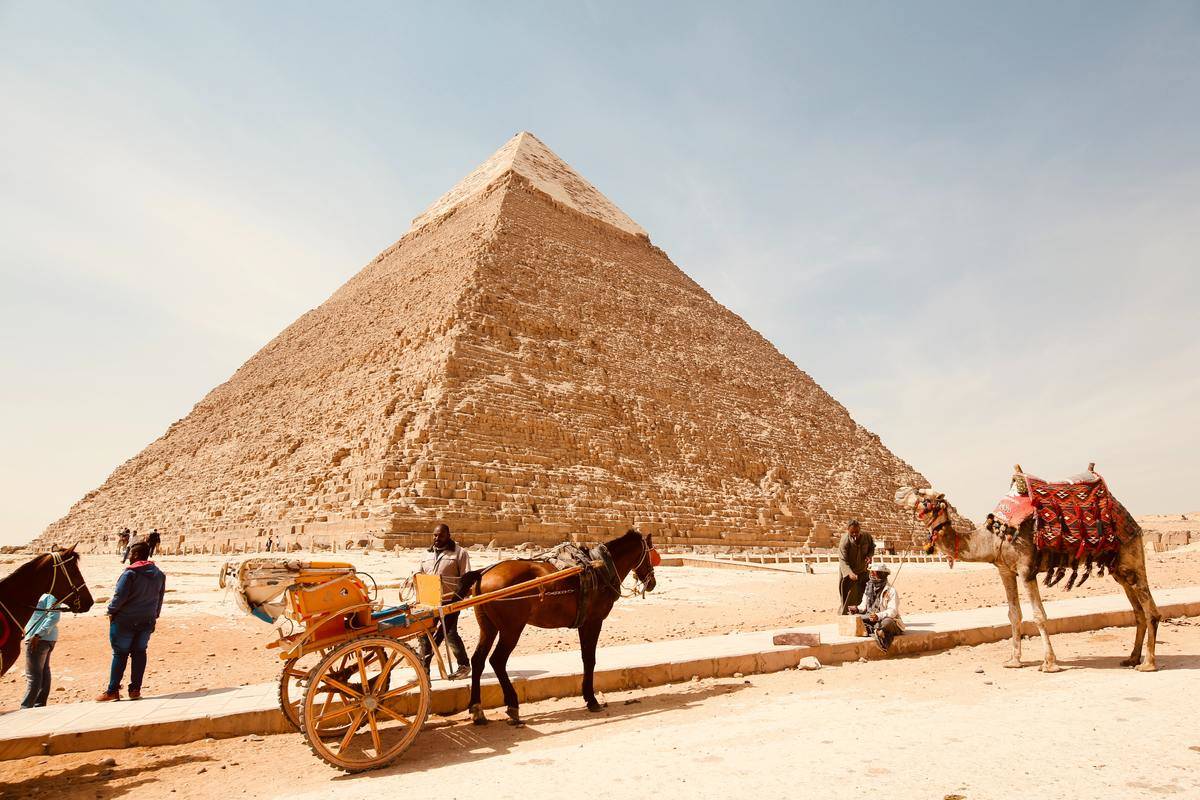
Subtracting the Great Pyramid’s length with its height gives 314.16—100 times pi. Then, the two sides together, in meters, make 100 times Phi (the Golden Number) squared. However, pi is a mathematical constant that wasn’t even named until 1793.
The Pyramids Are Practically Indestructible Even Though Attempts Have Been Made
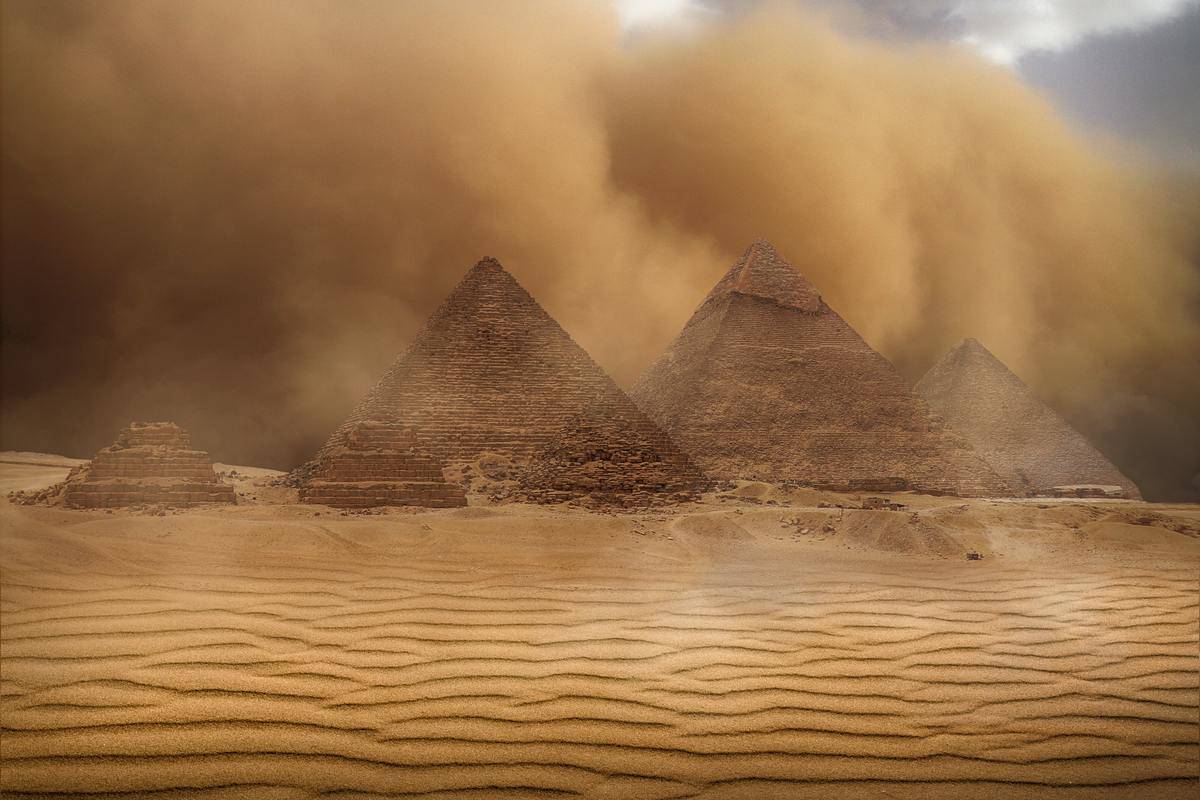
Al-Aziz, a Kurdish ruler and the second Ayyubid Sultan of Egypt, tried to demolish the Giza pyramids in the 12th century. He had to give up at some point because it was way too hard. All he managed to do was make a hole in the north face of Menkaure’s Pyramid.
Millions Of Tourists Visit The Pyramids Every Year
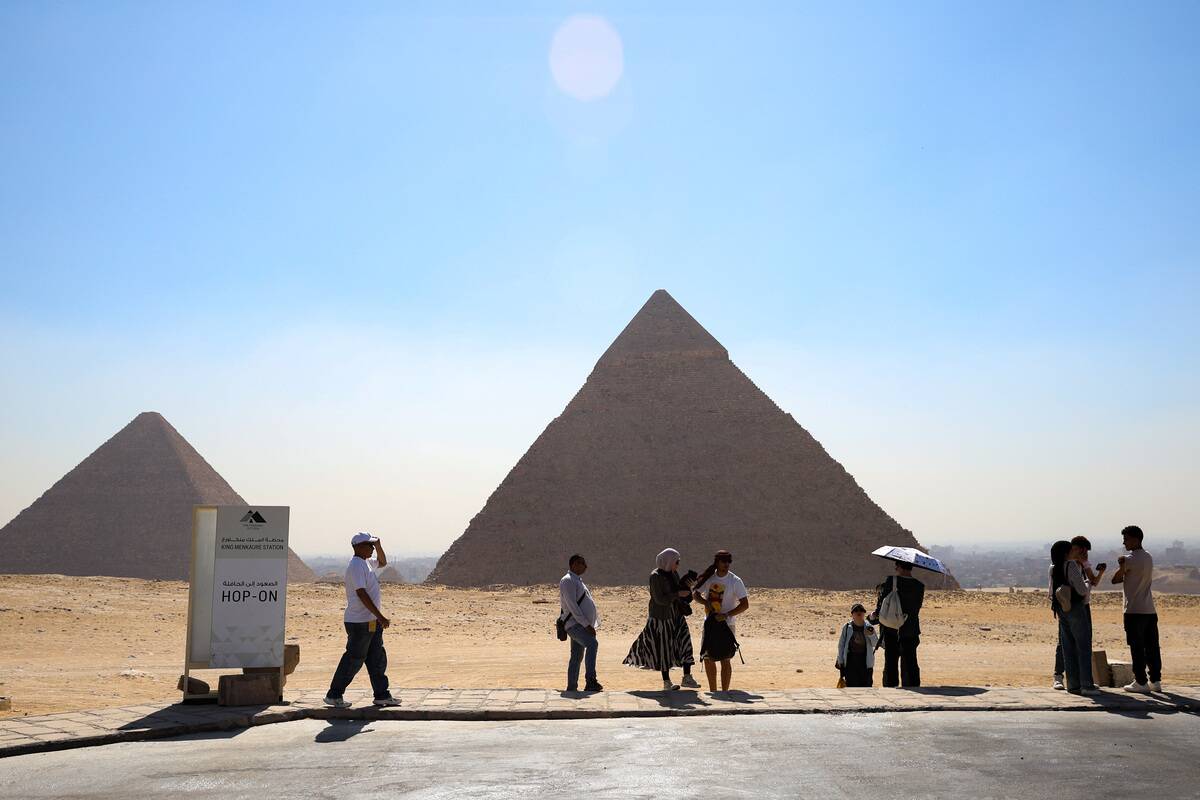
Although the number of tourists visiting Egypt’s great pyramids has waned and waxed over the years, The Bangkok Post reported that an estimated 2.5 million tourists visit the each year nowadays. Considering that they so this in spite of regional conflicts and aggressive scammers in the vicinity, it speaks to the incredible international draw the pyramids have become.
The newspaper also noted that a $30 million overhaul to the experience has inspired hope that more tourists will spend their time there, as the systems put into place by this revamp are intended to cut down on predatory “guides” and other tourist safety issues.

